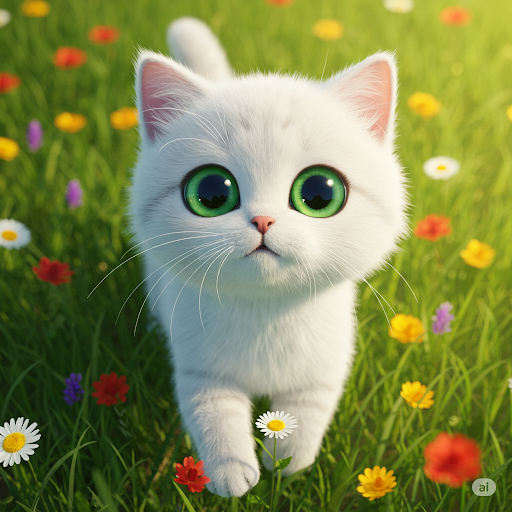
From Sacred Guardians to Waving Statues: Why Cats Have Paws-itively Been Considered Lucky Throughout History
Share
From Sacred Guardians to Waving Statues: Why Cats Have Paws-itively Been Considered Lucky Throughout History
In the diverse tapestry of human history and folklore, few animals have garnered as varied and often contradictory perceptions as the cat. While some cultures have viewed them with suspicion or fear, a powerful and persistent thread throughout millennia has woven cats into the fabric of good fortune, prosperity, and protection. From ancient granaries to modern storefronts, the feline mystique has often been synonymous with luck.
Let's explore some of the fascinating reasons why cats have been considered bringers of good tidings across the globe.
1. Ancient Egypt: Divine Protectors and Sacred Beings
Perhaps no civilization revered cats as profoundly as the ancient Egyptians. Cats were not just pets; they were integral to daily life and deeply entwined with their spiritual beliefs.
- Pest Control as Prosperity: The most practical reason for their early reverence was their exceptional ability to control rodent populations. Cats protected vital grain stores from mice and rats, directly contributing to the sustenance and wealth of the empire. A healthy harvest literally meant prosperity, and cats were seen as the guardians of this wealth.
- Bastet, the Cat Goddess: The goddess Bastet, often depicted as a lioness or a domestic cat, was associated with protection, fertility, joy, music, and the home. Egyptians believed that honoring cats pleased Bastet, bringing blessings and warding off evil. Killing a cat, even accidentally, was considered a grave offense, often punishable by death.
- Mummification: The elaborate mummification of cats, sometimes adorned with jewelry, further underscores their sacred status and the belief that they held a special place in the afterlife.
Their ability to ward off famine and protect families elevated them to a divine status, thus cementing their image as symbols of good luck.
2. Maritime Mousers: Lucky Charms of the High Seas
For centuries, sailors embarking on long and perilous voyages held a deep superstition about cats. A ship's cat was not merely a pet; it was an indispensable crew member and a vital good luck charm.
- Vermin Control: The primary practical benefit was, again, pest control. Cats kept rats and mice from gnawing through ropes, food stores, and even the ship's timbers, which could lead to structural damage and the spread of disease among the crew. A healthy, intact ship was a lucky ship.
- Weather Predictors: Sailors also believed cats could predict the weather. A cat playing wildly might signify a coming storm, while a cat grooming behind its ears suggested rain. Ignoring these "omens" was thought to invite bad luck.
- Safe Passage: Many sailors believed that a cat on board ensured safe passage and brought good fortune, guaranteeing a return to shore. Losing a ship's cat was often seen as a terrible omen.
3. Japanese Maneki-Neko: The Beckoning Bringer of Fortune
One of the most iconic symbols of feline good luck is the Japanese Maneki-neko, or "beckoning cat." These ceramic or plastic figurines, with one paw raised as if waving, are ubiquitous in businesses across Japan and increasingly around the world.
- Legend of the Gotokuji Temple: One popular legend tells of a stray cat that beckoned a feudal lord to shelter under a tree during a thunderstorm. Moments later, lightning struck where he had been standing. Grateful, the lord became a benefactor of the temple, and the cat became a symbol of good fortune and prosperity.
-
Different Paws, Different Luck: The raised paw holds specific meanings:
- Right paw up: Brings money and good fortune.
- Left paw up: Attracts customers and business.
- Colors and Charms: While traditionally white, Maneki-neko come in various colors, each with an associated lucky meaning (e.g., gold for wealth, red for protection, black for warding off evil).
4. European Folklore & Black Cats (A Nuanced View):
While the black cat is famously associated with bad luck in some Western superstitions, particularly during the witch hunts, it's crucial to acknowledge the counter-narrative and regional variations where they were considered lucky:
- Pirates and Sailors: Many British and Irish sailors considered black cats lucky, believing they would ensure a safe journey home.
- British and Japanese Homes: In Britain, a black cat crossing your path is often considered good luck, and a black cat gifted to a bride is thought to bring good fortune to her marriage. In parts of Japan, owning a black cat is believed to ward off evil and bring prosperity.
- Witches' Familiars (Complex): While familiars were often seen as evil in the context of witch persecution, the familiar itself (often a cat) was believed to empower the witch, providing strength or supernatural aid. This, in a twisted way, reflects a belief in the cat's potent, albeit dark, power.
5. Modern-Day Comfort and Prosperity:
Today, beyond ancient beliefs, the quiet comfort and companionship a cat brings to a home can be seen as a form of luck in itself. A healthy, happy cat often signifies a stable and peaceful home environment, contributing to the overall well-being and "good fortune" of its human inhabitants.
From protecting harvests and guiding ships to beckoning customers and offering quiet companionship, the cat's journey through history is rich with tales of luck and prosperity. Their enigmatic charm and undeniable utility have ensured their place not just in our homes, but in our deepest cultural beliefs about good fortune.
